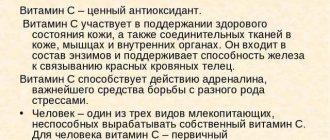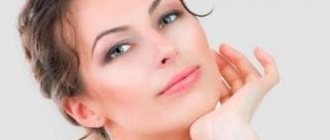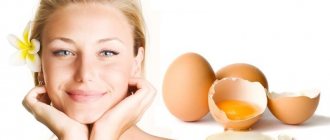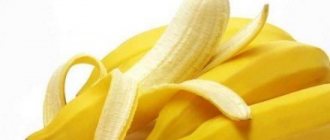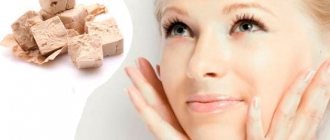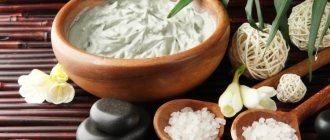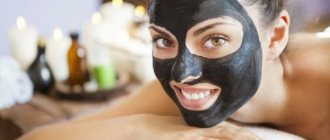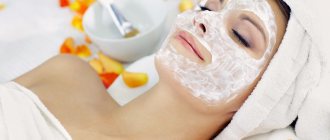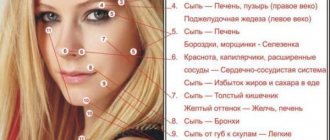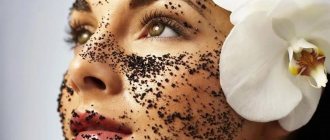It is impossible to imagine a woman who does not at all take care of the beauty and health of her skin. This is rather an exception to the rule. We all at least use creams. And they teach us to take care of ourselves since adolescence. That's when girls notice the first acne and pimples. They try to no avail to hide them under an ineptly applied thick layer of corrector and foundation.
In adulthood it seems simply funny and amusing. But many “berries” who have crossed the forty-year mark begin frantically looking for different ways to tighten the skin on their face and reduce the number of wrinkles.
Some people take up yoga, others run to the best salon. And there are women who use their grandmothers’ remedies: herbs, decoctions and other tricks. Often the result is better than using the same Botox and similar expensive procedures.
One of these little secrets is colorless henna. The first thing that comes to mind when you mention the plant is hair strengthening and coloring, but this is far from the limit of its capabilities.
Face mask with colorless henna. Colorless henna for the face?
We all know that colorless henna has a strengthening effect on hair and promotes hair growth.
But did you know that it can also be used for facial care? Colorless henna has cosmetic and medicinal properties for facial skin: eliminates inflammatory processes, nourishes, cleanses, restores the skin, has a pronounced antifungal, antibacterial and anti-inflammatory effect, whitens the skin.
Henna does not cause allergies or itchy skin and is a natural, environmentally friendly product.
Colorless henna is used in the form of masks for cosmetic procedures for skin rejuvenation. Henna contains a special acid that binds collagen in skin cells, which is important for anti-aging procedures. The astringent properties make colorless henna a tonic and it is used against inflammation, boils, bruises and even herpes.
Cosmetologists recommend that many teenagers use colorless henna to treat various types of inflammatory processes on problem skin - pimples, acne, blackheads. For problem skin, tea tree oil is added to colorless henna. The result is a medicinal product that relieves inflammation, normalizes sebum production and dries out the facial skin.
For girls who would like to lighten freckles and give their face a matte tint, it is useful to use colorless henna with boric acid infusion (2-3 drops.
Face masks with colorless henna.
Metal utensils should not be used to prepare masks from colorless henna.
Henna masks are used to treat excessively oily skin, seborrhea, nutrition, rejuvenation, lifting, skin tone, cleansing, whitening, against acne and blackheads, as well as for nail and body care.
For the best effect of the mask, the skin must be prepared - cleansed and treated with tonic or lotion, so the components of the mask are better absorbed by the skin.
Recipes for masks with colorless henna for different skin types.
1. mask for all skin types - cleansing, nutrition, tone.
1-2 Table. Pour henna spoons with colorless hot water until thick sour cream forms. Cool and apply to cleansed face for 20 minutes. Rinse off with warm water. Then, if desired, cream.
2. mask for oily and normal skin.
Mix colorless henna with heated kefir until a homogeneous mass is obtained, and apply to a cleansed face for 20 minutes. Rinse off with warm water. Then, if desired, cream.
3. nourishing mask for dry skin.
After cooling, add sour cream and vitamin A to the steeply brewed colorless henna. Apply the mask to prepared skin for 20 minutes. Rinse off with warm water. Then, if desired, cream.
4. mask for skin rejuvenation, tone and lifting.
To the mask with colorless henna - recipe number 1, add a few drops of rosewood or sandalwood essential oil. Leave for 15-20 minutes until dry.
5. mask for teenagers with contaminated skin - against blackheads.
Brew 1-2 tablespoons of boiling water. Spoons of colorless henna, mix thoroughly to a paste consistency. Leave covered for 5-10 minutes. Apply a warm or even hot mask in a thick layer to contaminated areas of the skin, but so as not to burn the skin. Keep until dry. A crust will form; carefully moisten the dried mask to remove the henna. After moistening your face with the remains of the mask, you can gently massage it in a circular motion for 1-2 minutes. - It will be an excellent peeling. Rinse with warm water, then cold. Apply cream according to skin type. It is advisable to do the cleansing procedure for blackheads in the evening or at night.
6. cleansing mask for any skin type.
1 tbsp. l. colorless henna and 1 tbsp. l. white clay, dilute with warm water or chamomile decoction to a paste. Apply the mask to prepared skin for 20 minutes. Rinse with warm water, then cold. Apply cream if desired.
Indications for use
The use of lavsonia applications with various additives is recommended both for women with problem skin and for people with healthy faces as a good preventive measure.
Henna in cosmetology is used for the whole body
The main indications for the use of masks may be the following factors:
- dry or oily skin;
- the presence of pimples and blackheads;
- wrinkled and tired dermis;
- unhealthy complexion.
Homemade face mask with colorless henna. Face mask made from colorless henna
Natural ingredients help a woman stay young and beautiful without visiting beauty salons and using expensive products. You can prepare masks yourself, and the effect will amaze you. It is important to choose the right components depending on your skin type. In this article you will learn how to prepare a face mask from colorless henna at home.
Residents of the Ancient East have been using colored henna to dye their hair for a long time. But not everyone knows that there is a special type of substance that is beneficial for the dermis.
Colorless henna is an environmentally friendly powder that is extracted from the lawsonia bush. The leaves of the plant are collected, dried and ground to a powder, after which the product is ready for use. A recipe for a rejuvenating face mask made from colorless henna is popular among Asian women. That's why Asian women have such smooth and delicate skin.
Colorless henna: composition and beneficial properties
A unique composition that has no analogues:
- Fisolen - relieves minor inflammation of small pimples and acne.
- Rutin - strengthens small blood vessels. The dermis acquires an even color, redness disappears.
- Betaine - has a deep nourishing effect and moisturizes dry skin. Recommended for use on dermis prone to peeling.
- Chrysophanol - helps to say goodbye to acne and blackheads, inflammation, irritation and purulent diseases. With regular use, you will say goodbye to unpleasant diseases forever.
Scientists have discovered that the product contains a lot of carotene. It helps improve natural skin color and even out tone.
A large number of different microelements and vitamins deeply nourish and moisturize the dermis. Women who made a mask from colorless henna are impressed with the result and leave positive reviews.
The natural composition of the product does not cause an allergic reaction in girls. This unusual powder does not contain chemical elements and is suitable for any skin type.
Mask of colorless henna - who is it suitable for?
If the skin itches and peels, a mask of colorless powder is necessary. The dry type of dermis ages earlier than others and wrinkles appear on it. To prevent this, nourishing masks are used. Colorless henna creates a film that protects the dermis from external negative influences, makes it velvety and silky, and retains moisture.
The mask is also suitable for oily skin. The active work of the sebaceous glands leads to the fact that excess fat accumulates in the pores. Because of this, acne, blackheads, pimples and other inflammatory diseases appear. Using a mask of colorless henna deeply cleanses the dermis and improves the functioning of the sebaceous glands. Important: apply masks regularly so that the effect lasts longer.
Colorless powder is useful for normal dermis type. Vitamins of group B, C will return the skin to a healthy appearance, make it elastic and radiant.
For problem skin types, the product can be used together with other cosmetics. Choose foam or gels for delicate cleaning. Buy an antibacterial agent at the pharmacy. Colorless henna is useful, but not omnipotent. For problem skin types, the desired effect will be achieved only through complex work with other products.
How to use colorless henna correctly
Before the procedure, be sure to do an allergic reaction test. Apply the prepared mixture to your hand or elbow and after twenty minutes, rinse with warm water. If there are no redness or rashes, apply the mask to your face.
Recommendations for use:
- To prepare a face mask: mix the product with water. On store shelves you can find a powdered mixture of henna with the addition of other components - we do not recommend using it. Such a product is not natural; it contains chemical impurities.
- Use ceramic, glass or plastic dishes.
- Pour a small amount of powder with clean boiled water for twenty minutes. Wait - the powder should completely dissolve. For the best effect, use decoctions of medicinal plants (sage, nettle or chamomile).
- Be sure to cleanse your facial skin. Wash off your cosmetics with a special foam or gel selected for your dermis type. Use scrub and peeling.
- It is recommended to keep the mask for no more than twenty minutes. During this time, all useful components will enter the pores. If the product begins to dry out, do not wait, rinse with warm water. Otherwise, you can dry out your skin.
- Pay attention to the composition. Foreign components are unsuitable for creating homemade masks from natural ingredients.
Examples of preparing masks from colorless henna
Classic version of the mask. Suitable for normal dermis - moisturizes and nourishes.
- Take a tablespoon of powder and add herbal infusion or boiled water. Wait fifteen minutes.
- Heat the composition in a water bath and apply to the top layer of the epidermis.
- Try to apply a thin layer evenly (use a special cosmetic brush).
- After twenty minutes, rinse with water at room temperature. If the mixture starts to dry out early, spray with warm water. After the procedure, moisturize the skin with cream.
To moisturize dry skin, add olive oil or sour cream with a high percentage of fat (2:1:1 ratio).
To cleanse oily skin, add a little kefir to the mixture. You will prepare a natural, delicate peeling.
If you want to get rid of age spots and freckles, add parsley juice (use a fresh plant). For the best effect, the procedure is carried out once a week for three months.
A universal option for moisturizing, nourishing and rejuvenating is adding essential oils.
Don't pour a lot - a few drops will do. The effect depends on the chosen oil.
- Pink - moisturizes and nourishes.
- Tea - reduces inflammation, soothes the dermis.
- Lemon - whitens.
Always stay beautiful!
How to cook properly
Henna powder should only be purchased in pharmacies or specialized stores. You need to pay attention to the expiration date of the product and the presence of a certificate. You cannot purchase henna powder from your hands or in markets. Using such a product for cosmetic masks can lead to negative consequences.
Henna is used to strengthen hair and nails
The dry ingredients are ground in a porcelain mortar to a powdery state. It is best to mix the components of the mixture with a plastic spatula or spoon. The finished product should have the consistency of thick sour cream.
Natural henna can react with various metals, so you can prepare a face mask only in glass, porcelain or ceramic containers.
Face mask with henna and olive oil. What are the benefits of a henna mask?
The benefits of henna masks for facial skin, as well as their secret, lie in the miraculous effects of such components as:
- Chrysophanol. It has wound healing and antiseptic properties;
- Emodin relieves inflammation and activates the regeneration process;
- Carotene improves complexion and skin structure;
- Betaine nourishes and moisturizes well, which is why henna-based products are suitable for dry and chapped skin;
- Ceaxanthin “pulls out” contaminants even from deep subcutaneous layers;
- Rutin makes the skin “breathe”, opening up oxygen and strengthening blood vessels;
- Fisalen relieves inflammation for various problems on the facial skin.
It is worth noting that only colorless henna can be used for cosmetic procedures, because any other type of it can leave unsightly spots on the affected area.
Indications for use
Henna in masks is recommended for any skin type, because its components are universal and help get rid of a wide variety of cosmetic imperfections. Using henna is an effective way to get rid of problems such as:
- Rashes and inflammations in problem skin types;
- Signs of withering and aging (wrinkles, sagging);
- Unnatural complexion, pigmentation;
- Excessive dryness, flaking.
Products with ground lavsonia leaves are also suitable for normal skin types: they provide “impregnation” with useful substances, which slows down the aging process, prevents premature aging and the appearance of more complex skin diseases.
The only contraindication for use is individual intolerance, but otherwise this ingredient is suitable for everyone who wants to improve their appearance.
Terms of use
Some useful tips for using masks:
- Before applying the finished composition to your face, you need to wash your face with a cleansing gel, or use a scrub;
- Do not keep any of the masks for more than 25 minutes;
- Carry out a full course of treatment lasting 1-2 months, maintaining a frequency of sessions 2-3 times a week.
Useful properties of the ingredient
Colorless henna is a powder made from finely ground dry stems of the lawsonia plant. Unlike leaf powder, it does not have a coloring effect and is used for medicinal and cosmetic purposes.
The effect of the components of colorless henna on the skin
The composition includes unique biologically active substances, which are not yet possible to obtain artificially . These are the following components:
- fisalen – has a strong calming effect;
- Crizophanol is a strong antiseptic;
- rutin – strengthens the walls of blood vessels;
- emodin – has anti-inflammatory and antimicrobial effects;
- ceaxanthin is a natural and soft abrasive;
- betaine – promotes hydration and nutrition of tissues.
In addition, the plant contains a large amount of vitamins and microelements, which have a prolonged healing effect.
Mask with white henna. Recipes for hair masks with henna
- Masks with henna to strengthen hair: 1) You will need: henna (already diluted with water), beaten yolk, burdock oil, sour cream. Add all ingredients to the slurry (butter and sour cream 2 tablespoons each), mix. Apply to hair. 2) Recipe with blue clay. Mix henna and clay with hot water, add a few drops of tea tree essential oil (no more than 5 drops).
Mask for split ends. Henna copes perfectly with such a problem as split ends. Surely many people who have shoulder-length hair or shorter experience this. Then you should try one of the masks: 1) Pour a full spoon of flaxseed into 1 glass of boiling water and leave. Then heat it to 70°C and pour in the henna, using the infusion instead of water. Apply for 50-60 minutes. 2) Mix diluted henna with a few tablespoons of mayonnaise, add honey.
Hair mask with henna at home for dry hair: 1) dilute 30 g of henna with hot milk, add a few tablespoons of honey. 2) Pour hot water over the required amount of henna, add chopped banana and mayonnaise. 3) Dilute henna with hot whey, add honey and burdock oil. Leave on hair for 45 minutes. 4) Pour a few tablespoons of warm olive oil into the prepared henna, add mashed avocado pulp, mix. Apply to hair.
Masks for oily hair: 1) Dilute henna with warm sour milk, add pre-soaked rye bread (know that a hair mask made from black bread has a whole range of useful substances); 2) Soften the ripe tomato and add it to the henna diluted with water.
Recipes for nourishing masks: 1) Vitamin hair mask henna and parsley with dill, which must be chopped. Pour hot green tea over henna and mix with herbs. Blondes should use it with caution; the mask has a somewhat coloring effect. 2) Oil mask with henna. In a water bath, heat a mixture of burdock, castor and olive oils to a temperature pleasant for the skin, pour henna over this mixture. Apply to the head, cover with polyethylene and a warm towel, leave for thirty-five to forty minutes.
Hair mask with henna and kefir. Recipe: heat 200 g of kefir in a water bath, pour henna over it, beat in chicken yolk. You can keep this mask for 40-45 minutes.
Recipe for hair loss. Two tablespoons of lemon juice, a little cottage cheese, honey - mix all the ingredients and add to the henna paste. Rub the mixture into the roots of your hair, first put on a plastic cap and a warm cap on top.
Henna masks to accelerate hair growth. 1) Colorless henna - well restores the vitality of hair and its beauty. Henna prepared in the usual way + a spoonful of honey + juice of one lemon + burdock oil. Add all ingredients to henna one spoon at a time. 2) A henna hair mask with the addition of mustard for hair growth will not only enhance the germination of curls, but will make the hair smooth and shiny. To do this, you need to dilute the henna, add a tablespoon of dry mustard and honey, and stir. Apply the mixture for half an hour. By the way, a mustard hair growth mask at home is recommended by many of our readers.
Contraindications
The ingredient is a herbal product with biologically active components, therefore, when used in facial applications there are a number of contraindications. First of all, this is an individual allergic reaction to the plant and its constituent substances. Therefore, before using the mask it is very important to do a test.
Be sure to check the reaction to all components of the masks separately to exclude the allergen from your care. If redness and itching occur, then you are allergic to this component.
If there are large inflammations, wounds, or burns on the face, any procedures involving the application of cosmetics to the dermis are canceled. High temperature, severe chronic disease in the acute phase or oncology are necessarily contraindications.
Henna applications should be used with caution by women with very dry skin. This plant dries out the skin, so you need to add natural oils to the mask mixture.
BEAUTY REQUIRES SACRIFICE
Let’s say you weighed all the “shoulds” and “don’ts” and decided to use herbal care. Whatever the herb is, even if it is not lawsonia, it colors the hair. Some less, some more. The lighter the base, the more noticeable the herbal shade. And with each mask this shade will deepen and perhaps become stronger in durability. If you are ready to part with your natural shade, no problem. If you are proud of your natural hair color and don't want to change it, then herbs are not for you.
Redheads, brunettes and dark blonds have less pain about their color. There may not be a change in shade. Or not cordially. Henna will rather deepen the natural shade, make it brighter, more beautiful. The result depends not so much on the herb, but on your skill in mixing it, creating a suitable cocktail.
Who is it recommended for?
Natural henna should not contain any foreign chemical components, so carefully study the information on the packaging.
With this natural gift you can quickly get rid of the following skin problems:
- enlarged pores and oily seborrhea;
- blackheads (comedones);
- all kinds of rashes (acne, pimples, boils);
- age spots, freckles;
- premature aging and fading of the skin surface (with loss of elasticity, appearance of wrinkles, changes in facial contours);
- peeling and signs of irritation of the epidermis;
- fungal infections;
- unhealthy color.
Expert opinion
WE RECOMMEND!
After using compositions with henna, the skin of the face becomes clean, smooth, renewed and elastic, and the oval is noticeably tightened.
LAWSONIA WITHOUT COLORING - Dummy
Bustar Dabur brand offers Lawsonia artificially deprived of Lawsone. Supposedly it thickens, but does not stain. I tried it. And I even planned to write a post about it. Revelatory. Because it's not lavsonia
It looks something like this. Packaging may vary. I just had a transparent bag. The dust is pale green in color. It literally doesn't smell like Lawsonia. Does not mix into cream. The powder lies at the bottom, the water on top. If you soak a cotton pad in the mixture, it will, yes, become colored! In the straw one. For the sake of the post, I even tried this dregs on my hair. A thin strand behind the ear. As a result, the hair became worse. Tough. They don't sleep together. They stick out like a broom. Dull. They become electrified. The ends began to cling, although they were not damaged. This crap isn't worth a post
Harm, side effects
Thanks to its natural composition, colorless henna is safe for hair health. However, allergic manifestations are possible due to individual intolerance. To find out, you need to do a classic test. Prepare a little mixture and apply it to the crook of your elbow. If after 15 minutes irritation or itching appears in this area, then it is better to refrain from using henna masks.
Also, you should not apply the product to your hair very often and alternate with other masks. For dry curls, once a month is enough, for oily curls - 2 times. Otherwise, your hair may dry out. When diluting the paste, it is better to add a teaspoon of vegetable oil (sesame, argan, broccoli, flaxseed). The oil will help prevent dryness.
